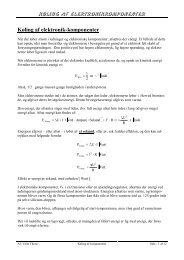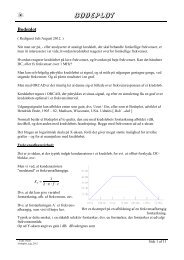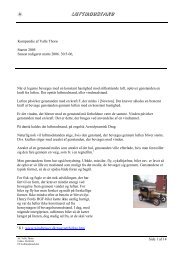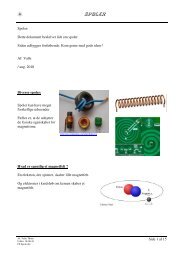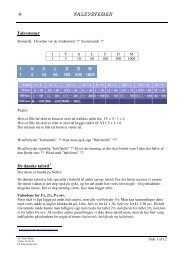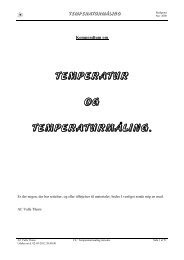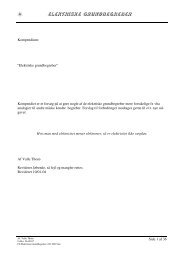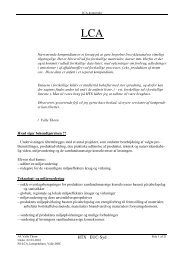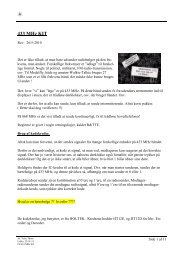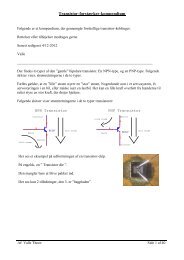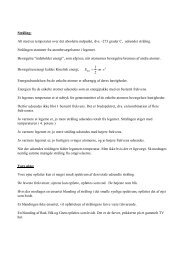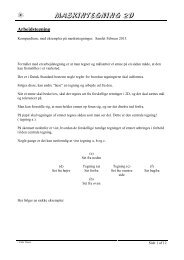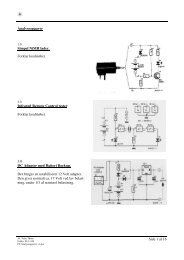Busser - Valle´s Bedste Hjemmeside.
Busser - Valle´s Bedste Hjemmeside.
Busser - Valle´s Bedste Hjemmeside.
Create successful ePaper yourself
Turn your PDF publications into a flip-book with our unique Google optimized e-Paper software.
<strong>Busser</strong><br />
The bit sequence will look like this:<br />
Wait a moment<br />
That's almost it for simple I2C communications, but there is one more complication. When the master is reading from the slave,<br />
its the slave that places the data on the SDA line, but its the master that controls the clock. What if the slave is not ready to send<br />
the data! With devices such as EEPROMs this is not a problem, but when the slave device is actually a microprocessor with<br />
other things to do, it can be a problem. The microprocessor on the slave device will need to go to an interrupt routine, save its<br />
working registers, find out what address the master wants to read from, get the data and place it in its transmission register. This<br />
can take many uS to happen, meanwhile the master is blissfully sending out clock pulses on the SCL line that the slave cannot<br />
respond to. The I2C protocol provides a solution to this: the slave is allowed to hold the SCL line low! This is called clock<br />
stretching. When the slave gets the read command from the master it holds the clock line low. The microprocessor then gets the<br />
requested data, places it in the transmission register and releases the clock line allowing the pull-up resistor to finally pull it high.<br />
From the masters point of view, it will issue the first clock pulse of the read by making SCL high and then check to see if it really<br />
has gone high. If its still low then its the slave that holding it low and the master should wait until it goes high before continuing.<br />
Luckily the hardware I2C ports on most microprocessors will handle this automatically.<br />
Sometimes however, the master I2C is just a collection of subroutines and there are a few implementations out there that<br />
completely ignore clock stretching. They work with things like EEPROM's but not with microprocessor slaves that use clock<br />
stretching. The result is that erroneous data is read from the slave. Beware!<br />
Serielle EEPROMS<br />
En af de interessante komponenter, der med fordel kan kobles til vores uC, er en EEPROM. Denne<br />
er en hukommelse, der kan gemmes data i, uden at de forsvinder når spændingen fjernes.<br />
/: Valle Thorø<br />
Side 19 af 43



